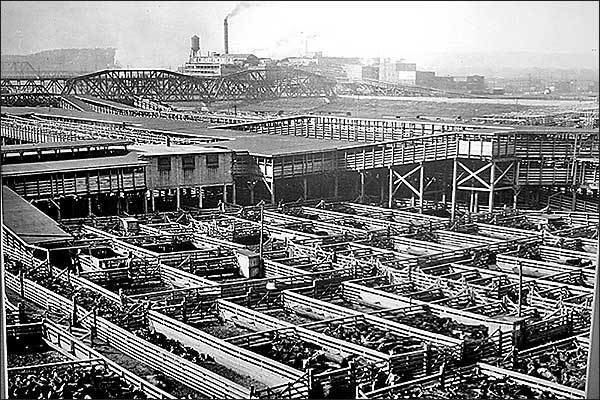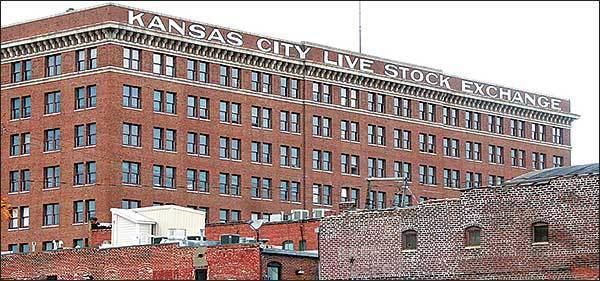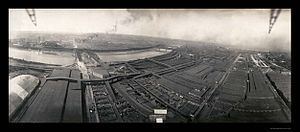 | ||
I am angus bill haw and the history of the kansas city stockyards
The Kansas City Stockyards in the West Bottoms west of downtown Kansas City, Missouri flourished from 1871 until closing in 1991. Jay B. Dillingham was the President of the stockyards from the 1948 to its closing in 1991.
Contents
- I am angus bill haw and the history of the kansas city stockyards
- The phantom 3 cruising over the kansas city stockyards
- History
- Recently
- References

The phantom 3 cruising over the kansas city stockyards
History

The stockyards were built to provide better prices for livestock owners. Previously, livestock owners west of Kansas City could only sell at whatever price the railroad offered. With the Kansas City Livestock Exchange and the Stockyards, cattle were sold to the highest bidder.

The stockyards were built around the facilities of the Central Overland California and Pikes Peak Express Company which had outfitted travelers on the Santa Fe Trail and Oregon Trail following the Kansas River. The company went out of business in 1862 following the failure of its Pony Express business from St. Joseph, Missouri to Sacramento, California.

The stockyards were established in 1871 on the Kansas side of the Kansas River along the Kansas Pacific and Missouri Pacific railroad tracks. In 1878 it expanded from its original 13 acres (53,000 m2) to 55, added loading docks on both the Kansas and Missouri Pacific tracks, new sheds for hogs and sheep, and developed one of the largest horse and mule markets in the country.

According to the Kansas City Kansan: "In the heyday year of 1923, 2,631,808 cattle were received at the Kansas City yards. Of these, 1,194,527 were purchased for use in Kansas City by the packing houses and local markets; the remainder or about 55 percent was shipped out. Of 2,736,174 hogs received, 879,031 were shipped out; of 377,038 calves, 199,084 were shipped out; of 1,165,606 sheep, 445,539 were shipped and of 42,987 horses and mules, all but 1,664 were shipped out."

The stockyards flourished through the 1940s. At its peak only the Union Stock Yards in Chicago was bigger. Business dropped off dramatically after the Great Flood of 1951 which devastated the stockyards and associated businesses and slaughterhouses. After the flood, the stockyards never recovered.
The stockyards straddled the state line across the Kansas river with two thirds of it in Kansas and one third in Missouri. At its peak 16 railroads converged at the yards.
Recently
In 1974 the City of Kansas City and the American Royal tried to reclaim the area by building Kemper Arena on the former stockyards land. The closing of the stockyards ended Kansas City's overt ties to being a cowtown. The stockyard's biggest heritage then became the annual 6-week American Royal agricultural show held each October and November nearby at Kemper Arena until 2010. Current plans call for razing Kemper Arena and building an additional purpose-built facility for the American Royal beside Hale Arena.
